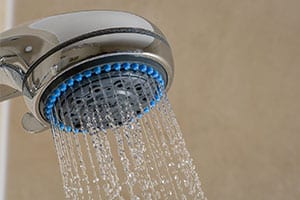
More people are embracing the idea of going green whenever possible. Along with recycling various materials, homeowners are looking for other ways to conserve resources like water and save energy. They are able to lower their carbon footprint and reduce greenhouse gas emissions. In many cases, these conservation efforts also enable them to save money by lowering monthly utility bills.
Residential Energy Efficient Fixture Upgrades
While they use less water, these fixtures retain the same level of performance. To protect the environment and conserve resources, homeowners should consider installing:
- Sink Faucets – While the current federal standard is a water flow of 2.2 gallons per minute (GPM), there are newer models on the market that limit their maximum flow rate to 1.5 GPM. This can save the average home close to 700 gallons annually.
- Shower Fixtures – Totaling up to 40 gallons per day, showers equal 17 percent of the average home’s water consumption. Low-flow showerheads reduce the amount of water from 2.5 GPM to 2.0 GPM.
- Toilets – While current models introduced in the 1990s use 1.6 gallons per flush (GPF), newer ultra low flow models reduce that amount to 1.28 GPF. Dual-flush toilets have one button for liquid and another for solid waste, which save even more water.
- Water heaters – On demand tankless units, solar water heaters and other energy-saving alternatives are available for reducing the cost of heating hot water, which accounts for approximately 18 percent of the average monthly utility bill.
If every household installed the latest plumbing technology, the country could save almost 3 trillion gallons of water annually. The Environmental Protection Agency (EPA) estimates that water-efficient plumbing fixtures and energy-efficient water heaters could save nearly 100 million kilowatts per hour and eliminate 80,000 tons of greenhouse gases.
Speak with a Knowledgeable Plumbing Contractor
A plumbing contractor will evaluate plumbing and hot water needs before recommending the best residential energy efficient fixture upgrades for a given situation. The contractor can provide an installation cost estimate and the projected energy savings, which allows homeowners make an informed decision.

